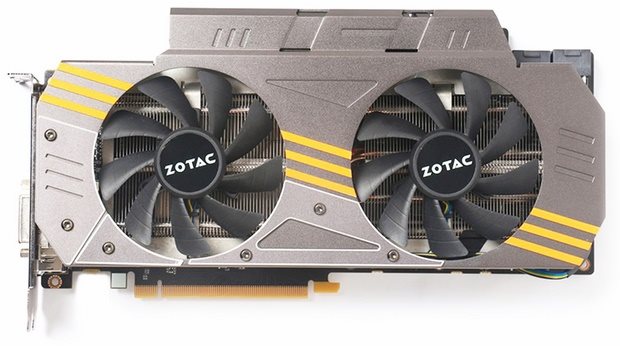Round-Up: GeForce GTX 980 and 970 Cards From MSI, EVGA, and Zotac Reviewed
In all of its iterations, Maxwell has proven to be a good performing, power-efficient architecture. But it’s at the high-end of the market where some of the most exciting products reside. Typically, when NVIDIA launches a new high-end GPU, cards based on the company’s reference design trickle out first, and then board partners follow up with custom solutions packing unique cooling hardware, higher clocks, and sometimes additional features. With the GeForce GTX 970 and GTX 980, NVIDIA’s board partners were ready with custom solutions very quickly and they’ve only been refined over time, as NVIDIA has tweaked their drivers and board partners massage specs, fan profiles, and the like.
Today we want to show you three custom GeForce cards, from enthusiast favorites EVGA, MSI, and Zotac. Two of the cards are GTX 980s—the MSI GTX 980 Gaming 4G ($559) and the Zotac GeForce GTX 980 AMP! Omgea ($549), the third is a GTX 970 from EVGA, or more specifically, the EVGA GeForce GTX 970 FTW with ACX 2.0 ($359).
All of these cards are custom solutions, that ship overclocked right from the manufacturer.
The first card we’re going to show you is the Zotac GeForce GTX 980 AMP! Omega. This is the second card from the top of Zotac’s current line-up of GeForce GTX 980 cards (the AMP! Extreme is the flagship) and it sports a number of noteworthy additions over and above reference GTX 980s.
The first, and most obvious addition is the humungous cooler on the card. The Zotac GeForce GTX 980 AMP! Omega is outfitted with a massive trip-slot cooling solution, that packs a pair of 85mm fans and a large heatsink assembly, which covers the entire front of the card. The GPU and memory on this card are also overclocked from the get go; by default the GPU can boost up to 1304MHz, but a second user-selectable profile can crank that up to 1374MHz. The 4GB of memory on the card is also overclocked versus reference models—it comes in at an effective speed of 7046MHz (7010MHz on reference cards).
Power delivery on the Zotac GeForce GTX 980 AMP! Omega has also been customized. The card has a trio of large, “Power Boost” branded capacitors in its 8+2 VRM to aid in smoothing current, and it has a pair of 8-pin supplemental PCIe power feeds, to provide additional headroom for overclocking. Reference cards have only a pair of 6-pin feeds. Zotac has also outfitted the GeForce GTX 980 AMP! Omega with an additional heat-plate on the rear of the card, which adds rigidity as well.
Another noteworthy addition to the Zotac GeForce GTX 980 AMP! Omega is the OC+ module. The OC+ module is a USB microcontroller that gives users the ability to connect the card to an internal USB header (cable included) to more closely monitor hardware health data and tweak the card in conjunction with Zotac’s Firestorm utility. And there are a couple of dip switches on the card too, that let users switch between the standard BIOS and an second bios targeted at hardware overclockers, that removes temperature protections limitations when super-cooling with substances like LN2 or liquid helium.
The outputs on the Zotac GeForce GTX 980 AMP! Omega consist of a single DVI port, a trio of DisplayPorts and a single HDMI port. And Zotac includes a bunch of goodies with the card, like the obligatory user’s manuals and installation guides, drivers, a couple of 8-pin power adapters, a DVI to VGA adapter, a large Zotac decal and the cable we mentioned earlier to connect the OC+ module to a USB header.










